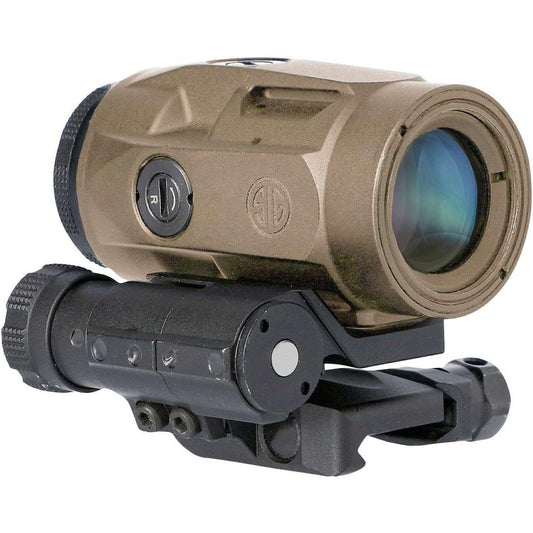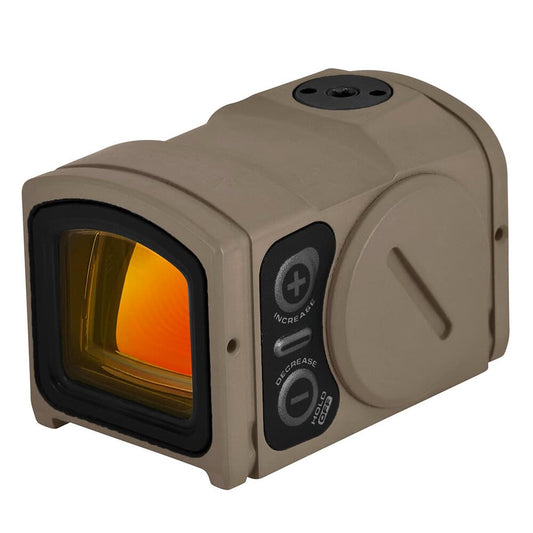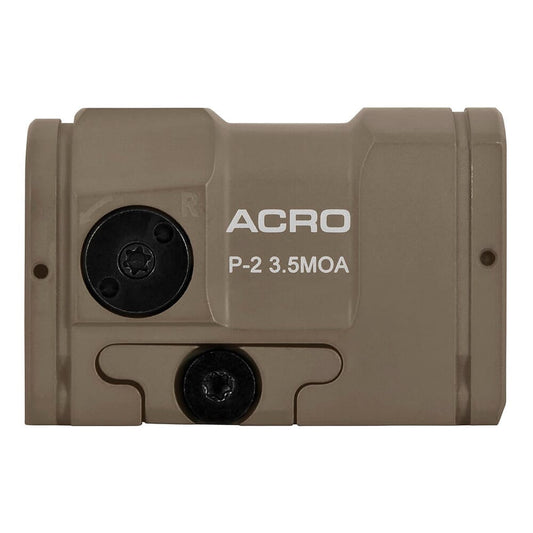

Sig Sauer's BF Spl FDE Juliet3 Micro with a flip-to-side mount excels in providing precision shooting capabilities without the added bulk. This micro red dot sight integrates effortlessly with your firearm, ensuring quick target acquisition and improved situational awareness. Its compact design makes it lightweight and easy to handle, perfect for both range use and field conditions.
Equipped with crystal-clear optics, the Juliet3 Micro allows for reliable performance across varying light conditions. The innovative flip-to-side mount facilitates smooth transitions between close and long-range engagements, helping you maintain focus on your target. For serious shooters, the Juliet3 Micro is a dependable choice that enhances shooting performance.
Key Features:
- COMPACT DESIGN for easy mounting on various firearms without added bulk.
- FLIP-TO-SIDE MOUNT allows for quick transitions between close and long-range optics.
- CRYSTAL-CLEAR OPTICS ensure superior visibility in various lighting conditions.
- ROBUST CONSTRUCTION withstands harsh environments and heavy use.
- QUICK TARGET ACQUISITION enhances your shooting speed and accuracy.
- ADJUSTABLE BRIGHTNESS settings for optimal performance in different light levels.
- LONG BATTERY LIFE keeps you on target longer without frequent replacements.
- WIDE FIELD OF VIEW ensures you stay aware of your surroundings.
Technical Specifications Table
| Feature | Specification |
|---|---|
| Magnification | 1x |
| Lens Diameter | 20mm |
| Weight | 2.5 oz |
| Dimensions | 2.5" x 1.5" x 1.5" |
| Material | Aluminum |
What’s in the Box?
- Juliet3 Micro Red Dot Sight
- Flip-to-side mount
- Lens covers
- User manual
Customer Reviews
“The Juliet3 Micro is incredibly easy to mount and provides fast target acquisition. Highly recommend!”
“I love the compact size. It fits perfectly on my rifle and the clarity is excellent!”
FAQ
How does the Juliet3 Micro perform in low light? The Juliet3 Micro features adjustable brightness settings, making it suitable for various lighting conditions, including low light scenarios.
Is it easy to maintain the Sig Sauer BF Spl FDE Juliet3 Micro? Yes, the durable construction minimizes wear and tear. Regular cleaning of the lenses and checking the mount will ensure optimal performance.
How does it compare with other optics? The Juliet3 Micro offers unique features like the flip-to-side mount, making it an excellent choice for shooters who need versatility and quick transitions. Other optics may lack this functionality.
Similar Models
Looking for more versatile optics? Discover our extensive Sig Sauer collection, including models like the Sig Sauer Romeo5 for robust red dot capabilities and Sig Sauer Tango6 for exceptional long-range precision. Explore our full range for optics tailored to your shooting adventures.
You May Also Like
Here’s some of our most similar products people are buying. Click to discover trending style.








